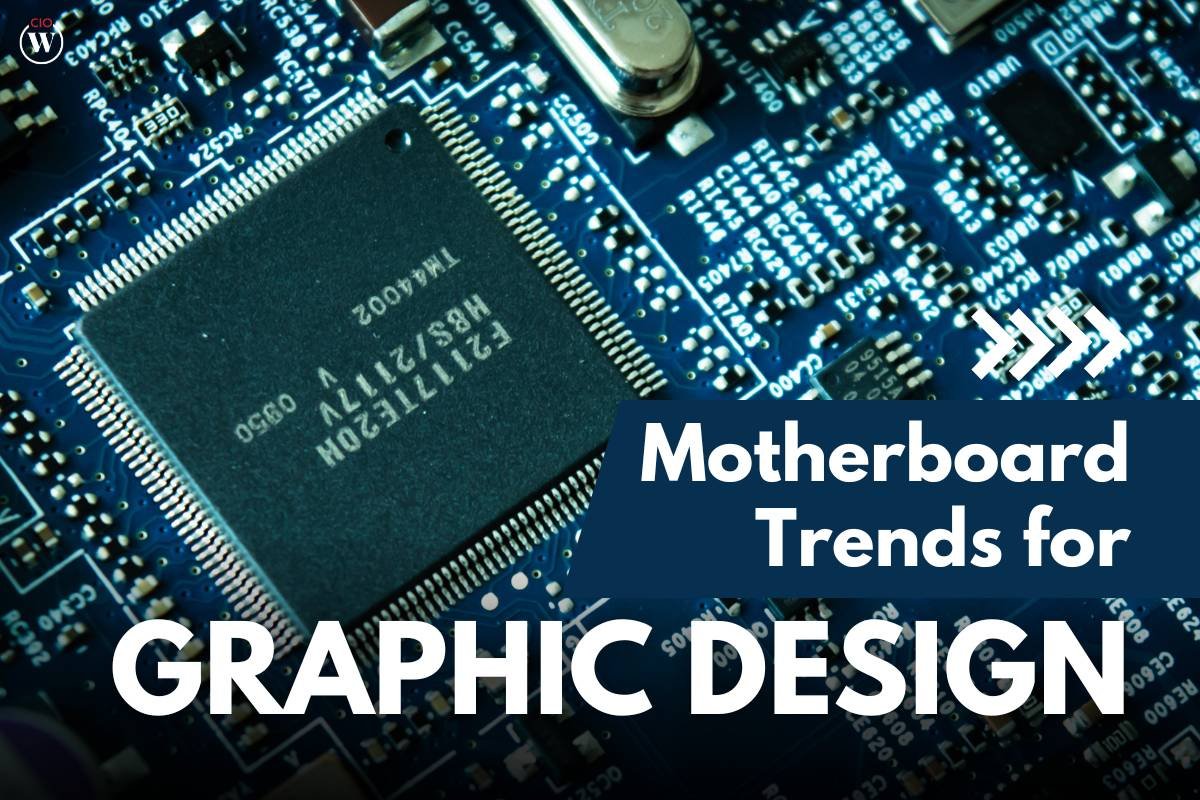In graphic design, choosing the right motherboard is crucial for good performance and smooth work. With technology evolving rapidly, staying updated on the latest motherboard trends for graphic design can enhance efficiency and productivity. This article explores the newest trends in motherboards tailored specifically for graphic designers.
Here are the seven motherboard trends for graphic design:
1. Enhanced Compatibility with High-Performance CPUs
Modern motherboards are designed to accommodate the latest generation of high-performance CPUs, such as Intel Core i9 and AMD Ryzen 9 series processors. These CPUs feature multiple cores and threads, offering substantial processing power ideal for rendering complex graphics and running resource-intensive design software like Adobe Creative Suite and Autodesk Maya.
For graphic designers, selecting a motherboard that supports these CPUs ensures seamless compatibility and maximum performance, enhancing rendering times, multitasking capabilities, and responsiveness when working with high-resolution images or 3D models. This compatibility also future-proofs the system, allowing designers to manage increasingly demanding software updates and workflow requirements tailored to motherboard trends for graphic design.
2. Integration of PCIe 4.0 Technology
PCI Express (PCIe) 4.0 represents a significant leap forward in data transfer speeds and bandwidth capacity compared to PCIe 3.0. Motherboard trends for graphic design include PCIe 4.0 slots that support high-speed NVMe SSDs and advanced graphics cards, crucial for managing large design files and high-resolution content.

Graphic designers benefit greatly from PCIe 4.0’s improved data transmission speeds between the CPU, GPU, and storage devices. This advancement reduces latency and enhances overall system responsiveness, significantly boosting workflow efficiency. With PCIe 4.0, designers can swiftly access and manipulate files, collaborate seamlessly on projects, and maintain smooth performance during intensive rendering and editing tasks. This technological enhancement highlights its essential role in empowering graphic designers to achieve greater productivity and creativity in their work.
3. Support for DDR5 Memory Modules
The transition to DDR5 memory modules marks a substantial advancement in memory performance for contemporary motherboards. DDR5 memory delivers higher data transfer rates, expanded bandwidth, and improved energy efficiency over DDR4. In the context of graphic design, DDR5 memory enables quicker data access, smoother multitasking abilities, and enhanced system stability when using memory-intensive design applications. This advancement empowers designers to manage larger files more efficiently, maintain responsiveness during tasks such as rendering and editing concurrently, and alleviate potential bottlenecks in memory-heavy workflows, reflecting current motherboard trends for graphic design.
4. Expansion of USB 4.0 and Thunderbolt 4 Ports
Connectivity is crucial in graphic design workflows, where seamless data transfer and peripheral integration are essential for productivity. Motherboard trends for graphic design include featuring USB 4.0 and Thunderbolt 4 ports, which offer superior data transfer speeds and support for multiple high-resolution displays, external storage devices, and peripherals.
USB 4.0 and Thunderbolt 4 ports, integral to current motherboard trends for graphic design, empower designers to swiftly transfer files between devices, connect high-resolution monitors for detailed design work, and integrate external storage solutions for large project files. These ports foster collaboration in creative studios and enhance workflow efficiency by reducing downtime related to data transfer and peripheral connectivity issues.
5. Emphasis on Thermal Management and Cooling Solutions
Efficient thermal management is crucial for maintaining peak performance and extending the lifespan of hardware components, particularly during intense workloads typical in graphic design. Modern motherboards incorporate advanced thermal design elements like sturdy heatsinks, heat pipes, and smart fan control systems to tackle these demands.

These advancements guarantee effective heat dispersal, minimizing the chances of thermal throttling and ensuring consistent performance during tasks such as rendering intricate animations or editing high-definition videos. Quiet operation and dependable thermal management create a conducive working environment for graphic designers, enabling uninterrupted creativity without worries about overheating or decreased performance. This focus on thermal management aligns with current motherboard trends for graphic design, emphasizing reliability and performance under pressure.
6. Integration of AI and Machine Learning Capabilities
The integration of AI and machine learning capabilities is revolutionizing motherboard trends for graphic design workflows by enhancing system performance and user experience. AI-powered features such as automated overclocking, predictive maintenance, and adaptive performance adjustments dynamically allocate system resources based on workload demands in real-time.
Graphic designers benefit from these AI-driven optimizations that streamline intricate design processes, boost rendering efficiency, and ensure reliable performance during intensive tasks. AI-enhanced motherboard trends for graphic design empower designers to achieve quicker project turnaround times, increase creative output, and stay competitive in a rapidly evolving industry fueled by technological innovation.
7. Focus on Sustainability and Eco-Friendly Design
With the rise in environmental awareness, motherboard manufacturers are focusing more on sustainability and eco-friendly design practices. They are incorporating energy-efficient components, using recyclable materials, and ensuring compliance with environmental regulations.

This approach helps to reduce carbon footprints and promote sustainable computing solutions. Graphic designers can support these environmental efforts by selecting motherboards that prioritize sustainability. These sustainable motherboard trends for graphic designs not only contribute to eco-conscious initiatives but also deliver reliable performance and long-term durability. This ensures that designers can pursue their creative ambitions while minimizing their environmental footprint.
Conclusion
Keeping up with the latest motherboard trends for graphic design helps creative professionals boost productivity, creativity, and efficiency. These trends include better CPU compatibility, PCIe 4.0 for faster data transfer, AI integration, and efforts towards sustainability. Understanding these trends helps graphic designers choose hardware that meets their performance needs, supports their creativity, and improves workflow. Embracing these advancements empowers designers to innovate and achieve outstanding results in visual communication and design.









